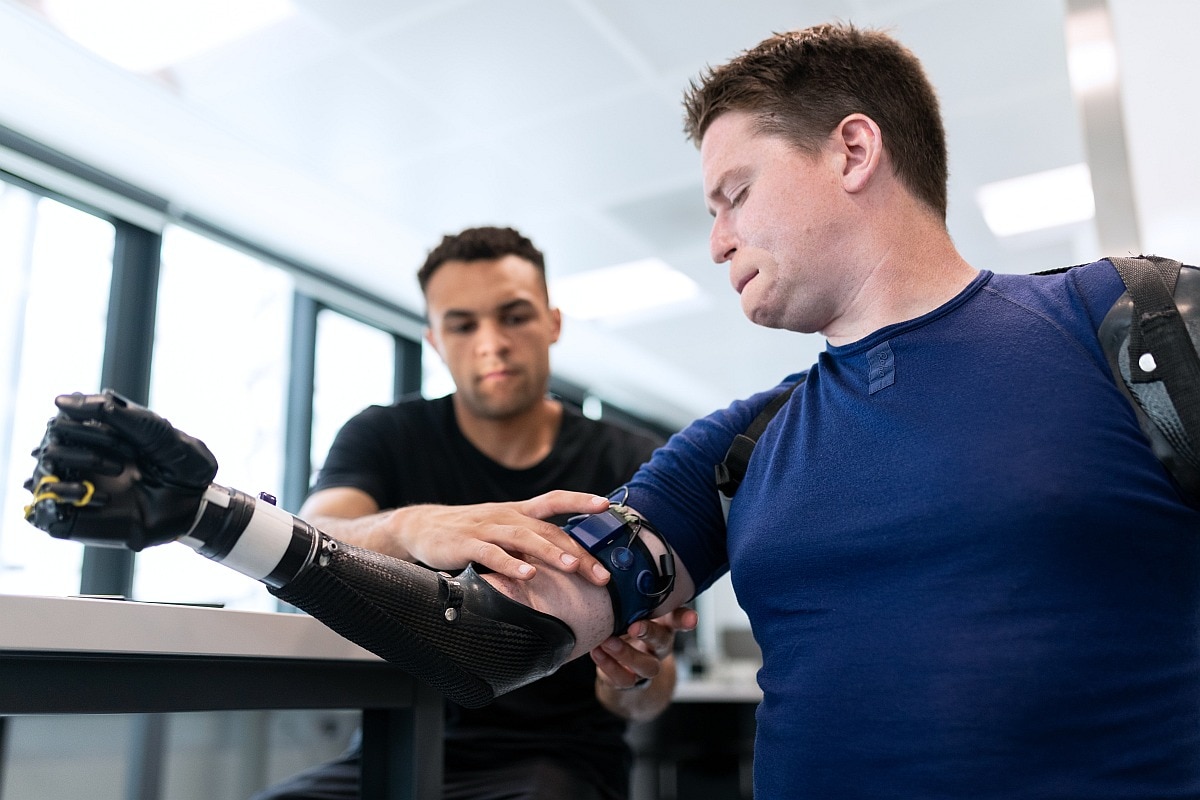Prosthetics and robotic limbs could be transformed as part of a new project to create cutting-edge sensors for use in robotic systems. The goal of the research is to create sensors that give robots enhanced capabilities by using precise pressure sensors that provide haptic feedback. The Scottish Research Partnership in Engineering (SRPe) and the National Manufacturing Institute for Scotland (NMIS) Industry Doctorate Programme in Advanced Manufacturing are funding the project, which is being led by the University of the West of Scotland (UWS) and Integrated Graphene Ltd. The sensors are made of 3D graphene foam, which when subjected to mechanical stress exhibits unique characteristics.
The researchers utilised a piezoresistive technique, which makes it simple to detect and adapt to the range of pressure necessary, from light to heavy, because when pressure is applied, the material dynamically changes its electric resistance. The research was published in the online journal Scientific.net.
The project’s principal investigator, Professor Des Gibson, said that over the past few years, the robotics industry has seen remarkable advancements, but due to a lack of sensory capabilities, the systems frequently struggled to carry out specific tasks easily.
Accurate pressure sensors capable of delivering more tactile ability were necessary for robots to function to their full capacity, said Des Gibson, adding, ““Our collaboration with Integrated Graphene Ltd, has led to the development of advanced pressure sensor technology, which could help transform robotic systems.”
According to Marco Caffio, the co-founder and chief scientific officer at Integrated Graphene, their innovative 3D graphene foam, Gii, had the ability to mimic the sensitivity and feedback of human touch, which could have a transformative impact on how robotics can be used for a whole range of real-world applications.
In order to provide an information input system or to give robotic systems human-like motor skills, pressure sensors are a crucial component in wearable electronics and robotics, said Dr Carlos Garcia Nunez of the School of Computing Engineering and Physical Sciences at UWS.
A innovative substance like 3D graphene foam has tremendous promise for use in such applications due to its excellent electrical, mechanical, and chemical properties. Dr Nunez added that their research highlighted the enormous potential of using dynamic pressure sensors to revolutionise the robotics sector.
The project’s next phase, which is funded by UWS, Integrated Graphene Ltd, SRPe, and NMIS, will focus on improving the sensors’ sensitivity before expanding their application in robotic systems.
For details of the latest launches and news from Samsung, Xiaomi, Realme, OnePlus, Oppo and other companies at the Mobile World Congress in Barcelona, visit our MWC 2024 hub.






